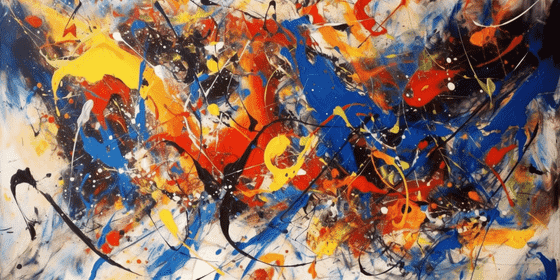What is the result of testing multiple tools that claim to be able to determine whether an image is automatically generated by AI?

Image generation AI such as 'MidJourney' and 'Stable Diffusion' can generate ultra-high-quality images that look like live action. However, the generated images are indistinguishable from images taken by humans, and there is a problem that there is a possibility of misidentifying the facts. Therefore, various organizations, including the AI research organization
How Easy Is It to Fool AI-Detection Tools? - The New York Times
https://www.nytimes.com/interactive/2023/06/28/technology/ai-detection-midjourney-stable-diffusion-dalle.html

According to The New York Times, AI detection tools such as '
To evaluate the effectiveness of current AI detection tools, The New York Times put over 100 AI-generated images and real-world images into AI detection tools to test the tools. In addition to 'AI or Not', four tools were used: ' AI Image Detector ', ' Illuminarty ', ' Hive ' and ' Sensity '.
Below is an example of the results of a test conducted by The New York Times. The image below is an image of Elon Mask kissing a robot generated by MidJourney.

As a result of putting this image into 5 types of AI detection tools, AI or Not, Hive, and Sensity were able to correctly distinguish it as an ``image generated by AI'', but it was created by Mr. Matthew Brown, aka Umm-maybe. AI Image Detector and Illuminarty have decided to be 'real'. According to The New York Times, the AI detection tool ignores even realistic situations and looks for unusual patterns in image sharpness, contrast, and pixel placement. .

The image of the smiling nun below is an image generated by AI.

As a result of the test, we succeeded in seeing that 4 detection tools except Illuminarty were 'images generated by AI'.

Below is an AI-

In this image, all the detection tools except Hive mistakenly think it's a 'real image'.

This image, taken by photographer Damon Winter, is a composite of images taken at the same location during the day and at night.

For this image, all tools except AI Image Detector succeeded in distinguishing it as a ``real image''.

The AI-generated image has gone viral on far-right social media and has been claimed to be 'an image of a Satanic ritual held in a library.'

As a result of the test, 4 tools except AI Image Detector correctly judged as 'image generated by AI'.

The image of waves crashing on the beach at sunset is an image generated by

For this image, AI or Not and Hive were able to correctly determine that it was 'generated by AI', but AI Image Detector, Illuminarty, and Sensity were deceived as images taken by humans.

Below is an AI-generated image of a man who looks like actor Daniel Radcliffe.

In this image, all tools except Illuminarty correctly judge it as an AI-generated image.

The image below is a landscape photograph taken by photographer Ashley Gilbertson.

In this image, only AI or Not judged that it was an image generated by AI, but all other AI detection tools succeeded in correctly distinguishing it as an ``image taken by a human.''

But sometimes AI detectors get it wrong even with images that are clearly unrealistic. The image below is a ``vintage image of a giant Neanderthal standing next to men and women'' generated by AI.

This image is incorrectly identified as a 'real image' by all detection tools. According to Kevin Guo, founder and CEO of Hive, it is difficult to judge low-quality images or images that have been reduced in resolution from the original image generated.

In addition, Adobe's May 2023

In this example, AI detection tools other than Sensity have judged it to be a 'real image'.

The New York Times is also testing AI detection tools for paintings, and the image below is a painting called '

Convergence is a painting characterized by colorful paint splatters, and all detection tools except AI or Not correctly judge it as a 'human-painted painting'.

On the other hand, this painting generated using MidJourney is a painting in which colorful paints are scattered like Convergence.

All detection tools except AI or Not have succeeded in correctly judging this image as 'painting generated by AI'.

However, even images that most AI detection tools can correctly judge can be easily fooled by interfering with pixel analysis with subtle textures that are barely visible to the naked eye. The images below are generated using MidJourney.

For this image, all tools except Illuminarty correctly judge it as an AI-generated image.

However, in the image (right) processed with pixels of a size that cannot be seen without enlarging the original image (left), an inaccurate result is presented that the possibility of being generated by AI is 3.3%. I was.

'The website incorporates AI detection tools in its backend to automatically identify images generated by AI and provide feedback to users,' said S. Sham Sundar of the Center for Socially Responsible Artificial Intelligence at Penn State University. We need to provide warnings, restrictions on how to share, etc.' ``AI detection tools should not be the only means of defense,'' Sunder said.
On the other hand, Nick Diakopoulos, an associate professor of computer science at Northwestern University, said, ``It is not important to determine whether an image is generated by AI or by humans, and what features are in the image generated by AI. It is necessary to build an AI system with an interface that can appropriately indicate whether it is a human or a human.'
This article frames the challenge as classifying images as “real” or “fake” but that's the wrong way to think about using AI here. We need AI systems with interfaces that explain to forensic analysts what features are indicative of fakeness or realness: https: //t.co/XTLF4pAUat
— Nicholas Diakopoulos (@ndiakopoulos) June 28, 2023
Related Posts:
in Software, Posted by log1r_ut






